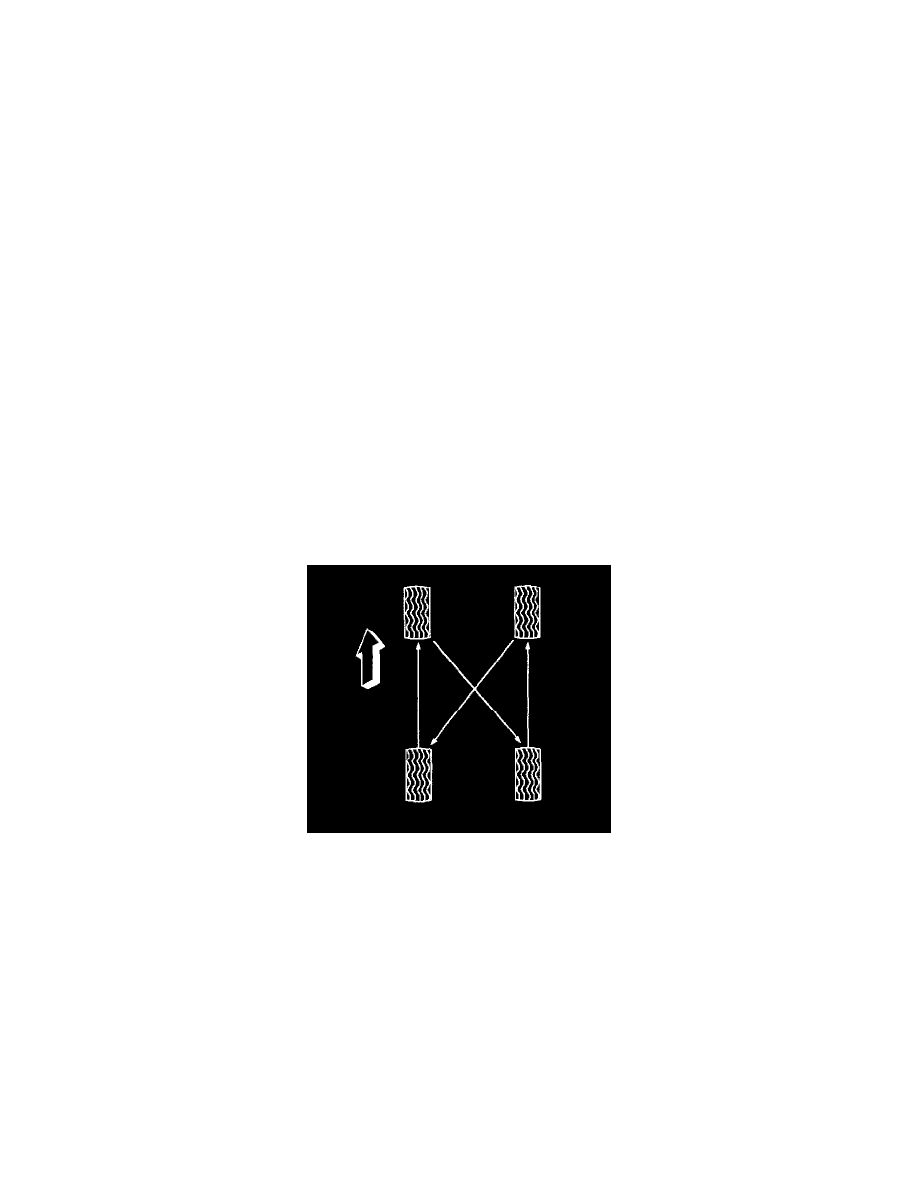Blazer 4WD V6-4.3L VIN X (2005)

Notice: Damage to either the tire bead or the wheel mounting holes can result from the use of improper wheel attachment or tire mounting
procedures. It takes up to 70 seconds for all of the air to completely exhaust from a large tire. Failure to follow the proper procedures could cause the
tire changer to put enough force on the tire to bend the wheel at the mounting surface. Such damage may result in vibration and/or shimmy, and under
severe usage lead to wheel cracking.
1. Deflate the tire completely.
Important: Rim-clamp, sometimes called European-type, tire changers are recommended.
2. Use the tire changer in order to remove the tire from the wheel.
3. Use a wire brush or coarse steel wool in order to remove any rubber, light rust or corrosion from the wheel bead seats.
Notice: When mounting the tires, use an approved tire mounting lubricant. DO NOT use silicon or corrosive base compounds to lubricate the tire
bead and the wheel rim. A silicon base compound can cause the tire to slip on the rim. A corrosive type compound can cause tire or rim deterioration.
4. Apply GM P/N 12345884 (Canadian P/N 5728223) or equivalent to the tire bead and the wheel rim.
5. Use the tire changer in order to install the tire to the wheel.
Caution: To avoid serious personal injury, do not stand over tire when inflating. The bead may break when the bead snaps over the safety
hump. Do not exceed 275 kPa (40 psi) pressure when inflating any tire if beads are not seated. If 275 kPa (40 psi) pressure will not seat the
beads, deflate, relubricate the beads and reinflate. Overinflation may cause the bead to break and cause serious personal injury.
6. inflate the tire to the proper air pressure.
7. Ensure that the locating rings are visible on both sides of the tire in order to verify that the tire bead is fully seated on the wheel.
Tire Rotation
Tire Rotation
In order to equalize wear, rotate the tires at the specified intervals. Also, rotate the tire and wheel assembly whenever you notice uneven tire wear.
Radial tires tend to wear faster in the shoulder area, particularly in front positions, due to design. Radial tires in non-drive locations may develop an
irregular wear pattern that can generate tire noise. This especially makes regular tire rotation necessary.
^
For vehicles with single rear wheels (4 tires), rotate the tires as shown.
